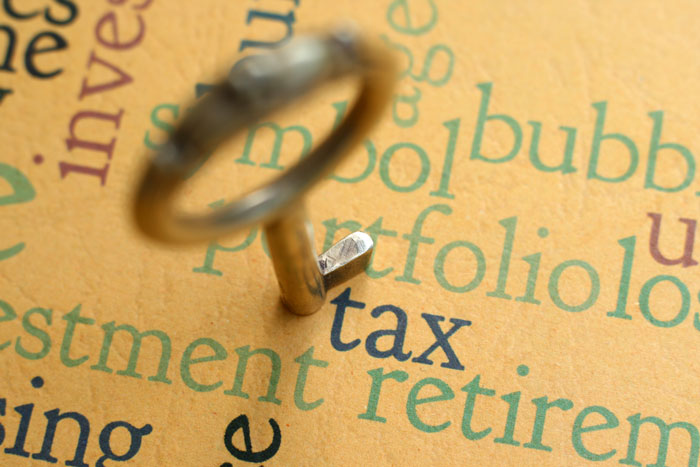Prime Minister Malcolm Turnbull and the Treasurer Scott Morrison are still trying to sell their plan to cut the company tax rate to 25% by 2026-27. The current rate is 30% and has been since 2001.
 The tax cut was introduced in the 2016 federal budget. The government indicated small to medium businesses turning over less than A$10 million would pay a company tax of 27.5% initially. The company turnover threshold for the tax cut would then increase over time from A$10 to $25 million in 2017-18 to A$50 million in 2018-19 and finally A$100 million in 2019-20.
The tax cut was introduced in the 2016 federal budget. The government indicated small to medium businesses turning over less than A$10 million would pay a company tax of 27.5% initially. The company turnover threshold for the tax cut would then increase over time from A$10 to $25 million in 2017-18 to A$50 million in 2018-19 and finally A$100 million in 2019-20.
But before any of this happens, the government needs to convince the senate crossbenchers to pass the legislation. It seems the government hasn’t won over tax experts and economists with this policy, here’s some articles that explain why.
Don’t expect an instant wage increase
In a national press club address Malcolm Turnbull justified the tax cut by saying, “company tax is overwhelmingly a tax on workers and their salaries.” It follows that cutting it would increase salaries right?
However there’s a whole lot of decisions businesses need to make before they even consider raising wages. It’s not just as simple as the government makes out, as professor John Freebairn from the University of Melbourne notes:
Individuals benefit from lower corporate tax rates with higher market wages. But the higher wage rates will take some years to materialise, and the magnitude of increase attributed to the lower corporate tax rate, versus other factors, is open to debate.
Businesses would need to consider the savings of international investors, what resources the business might need, what the return for investors would be on these. All of this before it would consider a wage increase for its workers.
The enlarged stock of capital, technology and expertise per worker becomes a key driver of increased worker productivity. In time, more productive workers are able to negotiate higher wages. Via this chain of decision changes, employees benefit from the lower corporate tax rate.
Any modelling on how much a tax cut could be worth to our economy is up for debate
Modelling is sensitive to whatever assumptions the government makes and these assumptions can be oversimplified. ANU principal research fellow Ben Phillips points out that tax reform like this inevitably has winners and losers and is influenced by powerful lobby groups.
In thinking about tax reform it is important to keep in mind that the gains from modest tax reform are not likely to be a revolution in Australia. The models themselves only estimate relatively small gains from tax reform.
Here’s a little something to bear in mind when hearing any figures thrown around on how much a company tax cut could be worth:
Over the past 25 years Australia’s living standards have increased by around 60% whereas the sorts of gains estimated from tax reform are expected to be little more than 1 or 2%. It remains important that in securing such modest gains we don’t ignore fairness.
The benefit to the domestic economy won’t be that big
The idea behind the cut is that companies will be motivated to provide jobs and other economic benefits because they are receiving a tax break. In theory this kind of tax should boost the economy in the long term, but as John Daley and Brendan Coates from the Grattan Institute explain it’s not that simple.
In Australia, the shares of Australian residents in company profits are effectively only taxed once. Investors get franking credits for whatever tax a company has paid, and these credits reduce their personal income tax. Consequently, for Australian investors, the company tax rate doesn’t matter much: they effectively pay tax on corporate profits at their personal rate of income tax.
The Grattan researchers point out that if companies pay less tax then they might reinvest what they save, but in practise most profits are paid out to shareholders. So the tax cut won’t have much of an impact on domestic investment.
They also pick holes in the Treasury’s modelling on the tax cut’s boost to Gross National Income (GNI).
Treasury expects that cutting corporate tax rates to 25% will only increase the incomes of Australians – GNI – by 0.8%. In other words, about a third of the increase in GDP flows out of the country to foreigners as they pay less tax in Australia. And because most of the additional economic activity is financed by foreigners, the profits on much of the additional activity will also tend to flow out of Australia.
It doesn’t make much of a difference
Another argument for cutting Australia’s company tax rate is to deter companies from shifting their profits to other countries where the tax rate is lower. Recently President Trump promised to cut the United States federal corporate tax rate from 35% to 15%.
Antony Ting, associate professor at the University of Sydney notes most countries have been reducing their company tax rates over the past two decades. This hasn’t changed the incentive for multinationals to avoid taxes.
The tax-avoidance “success” stories of multinational enterprises such as Apple, Google and Microsoft suggest this argument is weak. The fact is that the profits these multinationals shift offshore often end up totally tax-free.
A FactCheck by Kevin Davis, research director at the Australian Centre for Financial Studies, reviewed by economist Warwick Smith, says there’s no point to comparing Australia’s company tax rate with other countries anyway.
Australia’s dividend imputation tax system means that any comparison of our current 30% rate with statutory corporate tax rates elsewhere is like comparing apples and oranges.
Small and medium businesses actually lose out
Due to the way the proposed company tax cut is structured, foreign investors get a windfall while local employers including small and medium businesses cop a cost because they remain uncompensated.
Economist Janine Dixon from Victoria University modelled how the cut would play out.
Local owners of unincorporated businesses are taxed at their personal tax rate. Because of Australia’s dividend imputation system, Australian shareholders in incorporated business are also taxed at their personal rate, not the company tax rate.
She explains that 98% of small businesses (employing four or fewer people) are wholly Australian owned and because of this are indifferent to the cut, but 30% of large businesses (employing more than 200 people) have some component of foreign ownership.
An increase in foreign investment is generally understood to be a driver of wage growth. This is the basis for the argument that at least half of the benefit of a cut to company tax flows to workers… We find that benefit to foreign investors will exceed the total increase in GDP. In the domestic economy, benefits to workers will be more than offset with a negative impact on domestic investors and the need to address additional government deficit.
Other things are just as important
Even if some businesses are keen for a tax cut, meaning more money in the kitty, it’s how these businesses spend this money that counts.
Jana Matthews from the Centre for Business Growth at the University of South Australia says many CEOs are uncertain about what to do in order to grow their business and are fearful of making the wrong decisions.
We need to focus as much attention on the management education of founders, CEOs and MDs [managing directors] of medium-sized companies as we do on providing them with more money. Once they learn how to grow their companies, they will definitely need money to become the engines of growth, and they will certainly hire more people, creating the jobs we all want.
Author: Editor, Business and Economy, The Conversation












